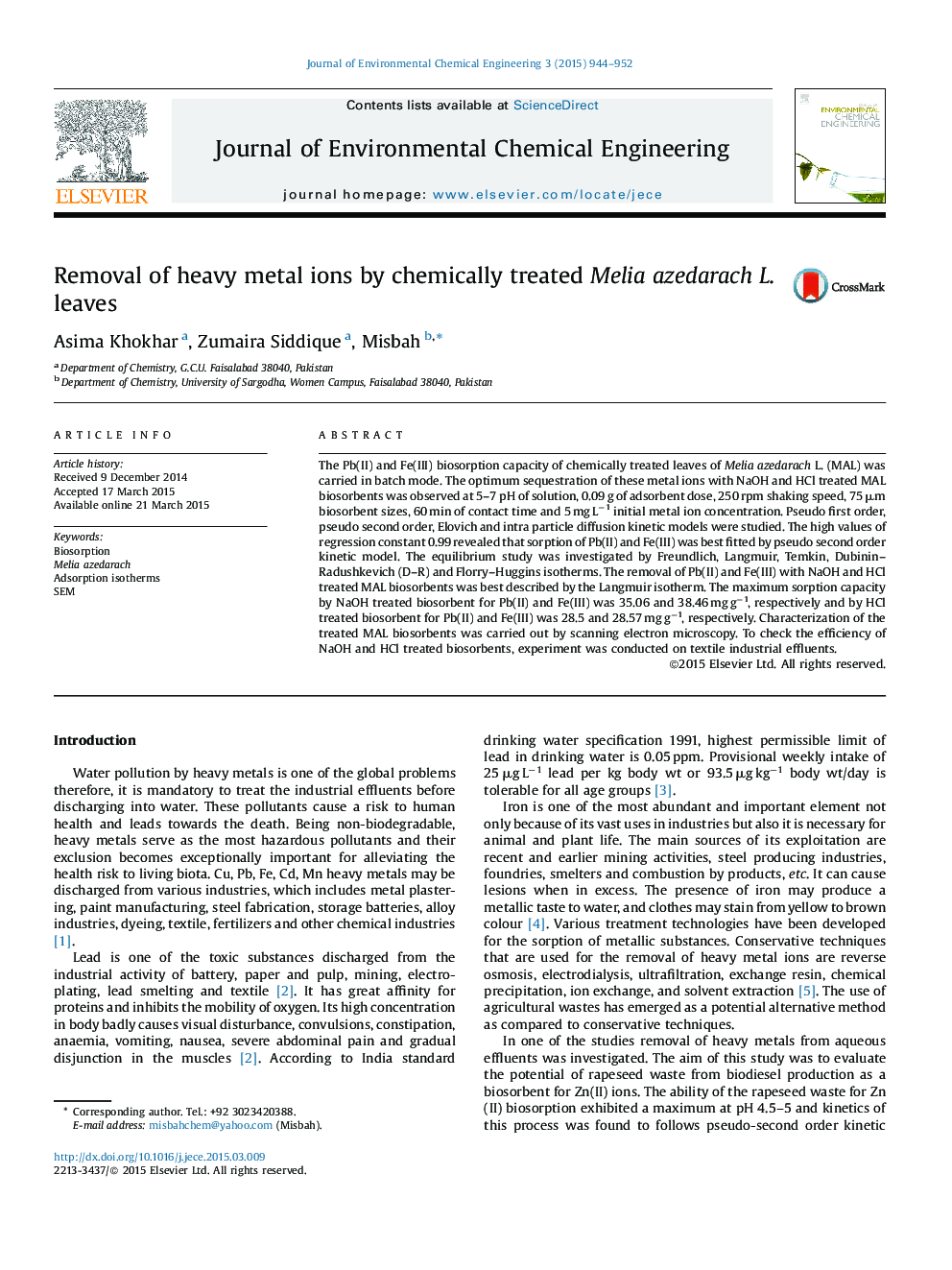| Article ID | Journal | Published Year | Pages | File Type |
|---|---|---|---|---|
| 222319 | Journal of Environmental Chemical Engineering | 2015 | 9 Pages |
•Biosorption.•Acid, base treated biosorbent.•Surface analysis by SEM.
The Pb(II) and Fe(III) biosorption capacity of chemically treated leaves of Melia azedarach L. (MAL) was carried in batch mode. The optimum sequestration of these metal ions with NaOH and HCl treated MAL biosorbents was observed at 5–7 pH of solution, 0.09 g of adsorbent dose, 250 rpm shaking speed, 75 μm biosorbent sizes, 60 min of contact time and 5 mg L−1 initial metal ion concentration. Pseudo first order, pseudo second order, Elovich and intra particle diffusion kinetic models were studied. The high values of regression constant 0.99 revealed that sorption of Pb(II) and Fe(III) was best fitted by pseudo second order kinetic model. The equilibrium study was investigated by Freundlich, Langmuir, Temkin, Dubinin–Radushkevich (D–R) and Florry–Huggins isotherms. The removal of Pb(II) and Fe(III) with NaOH and HCl treated MAL biosorbents was best described by the Langmuir isotherm. The maximum sorption capacity by NaOH treated biosorbent for Pb(II) and Fe(III) was 35.06 and 38.46 mg g−1, respectively and by HCl treated biosorbent for Pb(II) and Fe(III) was 28.5 and 28.57 mg g−1, respectively. Characterization of the treated MAL biosorbents was carried out by scanning electron microscopy. To check the efficiency of NaOH and HCl treated biosorbents, experiment was conducted on textile industrial effluents.
